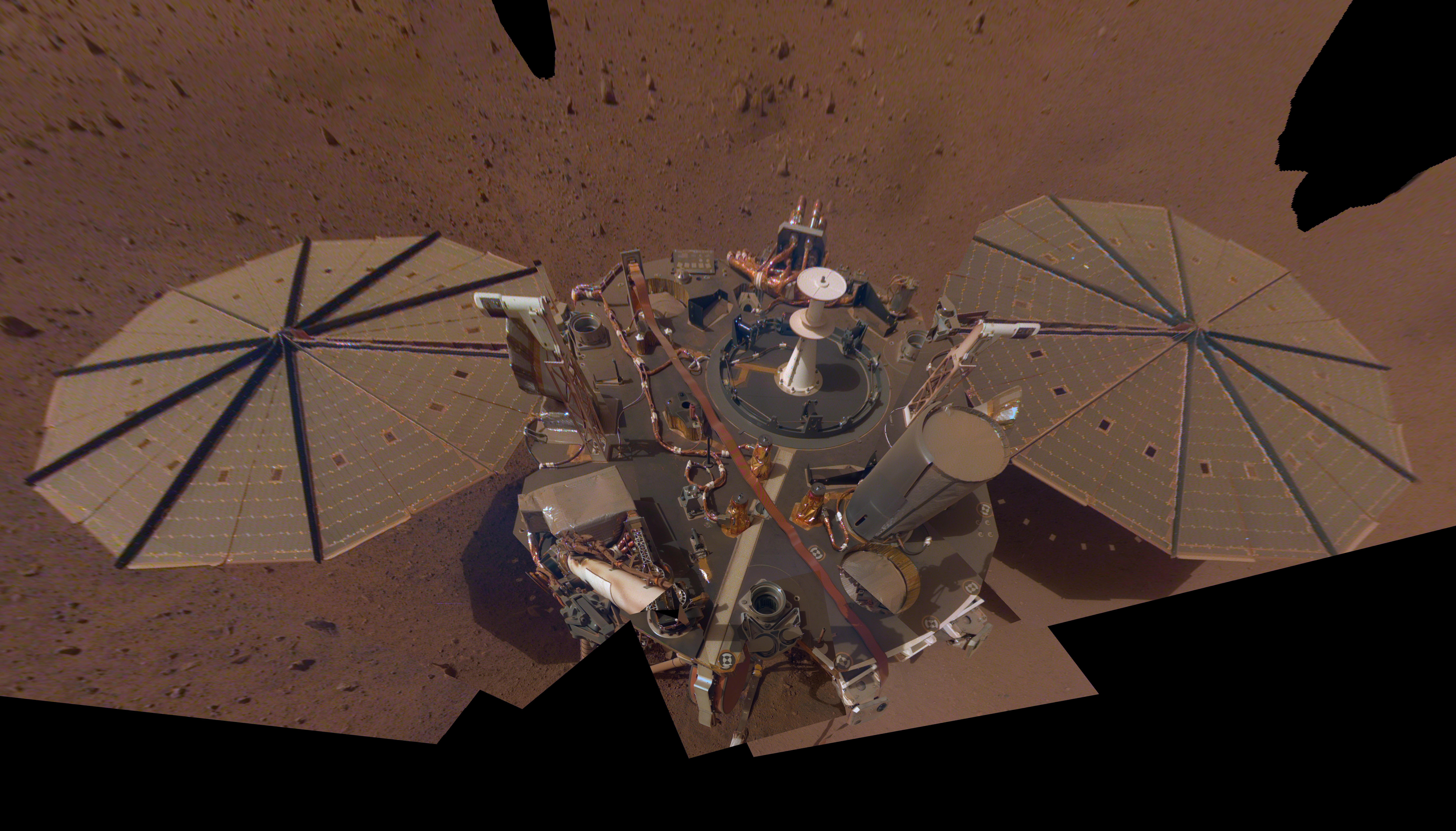As InSight continues to set up shop on Mars, the conditions take their toll. A thin coating of dust now covers the spacecraft entirely, thanks to Mars’ winds.
Below you can see a comparison of the dust build up. The first image shows InSight’s first full selfie taken Dec. 6, 2018 (Sol 10), with its solar panels and instruments all sparkling clean. The second is a mosaic image, comprising of 14 photos taken March 15 and April 11 (Sol 106 and 113), and dust is seen on everything.

(Image Source: NASA/JPL-Caltech)

(Image Source: NASA/JPL-Caltech)
But Mars’ winds can also provide InSight with a much-needed cleaning. For example, InSight detected a wind vortex, or dust devil, February 1 (Sol 65). After it passed, InSight experienced a 0.7 percent increase in power on one of its solar panels, while the other experienced a 2.7 percent power boost. This data suggests that some of the dust was shooed away by the wind.
“It didn’t make a significant difference to our power output, but this first event is fascinating science,” says InSight science team member Ralph Lorenz of Johns Hopkins University’s Applied Physics Laboratory in Laurel, Maryland. “It gives us a starting point for understanding how the wind is driving changes on the surface. We still don’t really know how much wind it takes to lift dust on Mars.”
InSight’s weather sensors, known as the Auxiliary Payload Sensor Suite (APSS), are important in measuring these dust cleaning sessions. During the recent dust devil event, APSS detected a wind speed increase with a peak speed of 45 mph, 180-degree wind direction change, and a significant air pressure drop.
According to NASA, it was the “biggest air pressure drop ever recorded by a Mars surface mission: 9 pascals, or 13 percent of ambient pressure. That pressure drop suggests there may have been even stronger winds that were too turbulent for sensors to record.”
InSight participating scientist Aymeric Spiga of the Dynamic Meteorology Laboratory at Sorbonne University in Paris says, “The absolute fastest wind we’ve directly measured so far from InSight was 63 miles per hour (28 meters per second), so the vortex that lifted dust off our solar panels was among the strongest winds we’ve seen. Without a passing vortex, the winds are more typically between about 4-20 miles per hour (2-10 meters per second), depending on the time of day.”
The dust cleaning took place at 1:33 p.m. local Mars time, which falls into the usual range of occurrences between noon and 3:00 p.m.
InSight’s meteorological sensors provide the team with continuous data, and recently gave scientists “their first measurements of wind and dust interacting ‘live’ on the Martian surface,” according to NASA. The space agency also says this data can help solar-powered designs for future missions, and paint a clearer picture of how wind sculpts the Martian landscape.
Although lacking the meteorological sensor tech, NASA’s Spirit and Opportunity rovers experienced an even larger power boost from a passing dust devil, which increased power by as much as 10 percent.
Filed Under: Aerospace + defense




